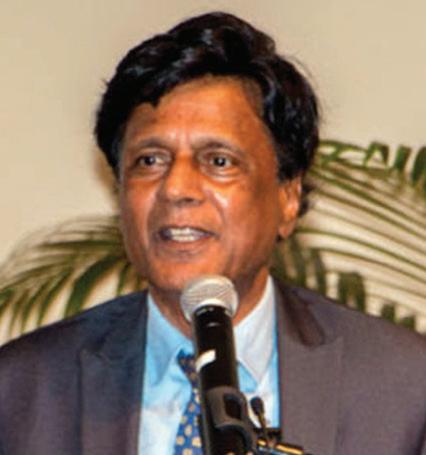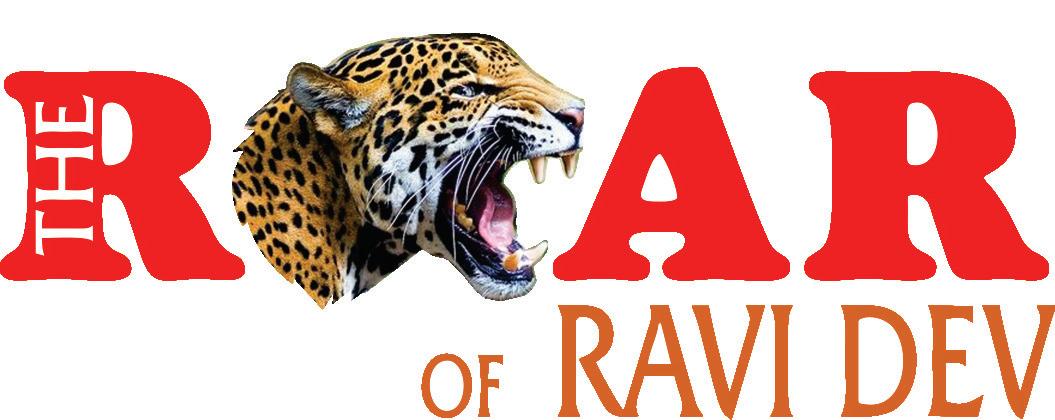
6 minute read
Wei-1 project pegged at US$170M, will also appraise Kawa-1 Professionalising the Police
The criticisms of the Guyana Police Force (GPF) by the Opposition and Opposition elements, and calls for its “professionalisation”, have now become a standard feature of their political polemics. We have been calling for such professionalisation since the 1990s, including representativeness and less authoritarian behaviour, but without any support from that quarter. We welcome their new epiphany.
Ravi Dev

We explained that the inherent authoritarian nature of our GPF is on account of its model being the Irish Royal Constabulary (IRC), rather than the London Metropolitan Police (LMP), when it was formed in 1839. The LRC, originally chosen as the model by local authorities in 1838, was discarded because it was too citizen-centred. The IRC, on the other hand, was militarily centralised, heavily armed, and ethnicised: it consisted mostly of Irish Protestants and English officers, to ensure the imposition of order against the predominantly Catholic population. Its local mirror-image, GPF, was to “serve and protect” the colonial rulers against the Guyanese people. The authoritarian nature of the GPF is so embedded in its culture that nothing other than a complete overhaul and institutionalisation of new values would make any difference. This is a threshold necessary for reform.
On “representativeness”, in 1993, a single act of racism by the LMP was not allowed to be covered up by the authorities, as had been the norm, and led to an inquiry in 1999. It prompted a major overhaul for the racial “representativeness” of the British Police as an integral aspect of their professionalisation. In that year, Race Equality Employment targets were introduced for their Police Forces. These were now dubbed “Services”, as ours should be, to emphasise the turn away from using “force”.
Their overall national target was set at 7%, and the LMP at 25%. The focus was to aggressively pursue recruitment, retention, and progression of minority ethnic officers and staff. Initiatives varied from Force to Force, but included targeted advertising, mentoring, familiarisation days, open days, and seminars directed at minority groups. Today, the national percentages of minorities are 8.1% and 16.3% for the LMP, up from 2% and 3% in 1999.
In Guyana, because of intense pressure by the PPP during the 1960s’ riots - when the African-dominated Police and Volunteer Forces had displayed ethnic partiality - the British had established an ethnically balanced Special Services Unit (SSU) in 1964. It was disbanded in 1965 by the PNC. But as part of the Britishimposed conditions for granting independence, an International Commission of Jurists (ICJ) panel was deployed to investigate ethnic representativeness in state institutions.
It recommended a 75% recruitment of Indians until the GPF became representative of the population. After observing the stricture for a year, the PNC reverted to the old pattern. While one could understand the PNC’s rationale for its realpolitik, the PPP’s stance after 1992 was very circumspect.
Ashton Chase - a founder of the PPP, and a perennial insiderspeculated that the party “allowed these recommendations to go abegging for fear of being stigmatised as an ‘Indian’ party.” After riots greeted the PPP’s electoral victory in 1992, the B.O. Adams Commission of Inquiry recommended that “the Police Force be more ethnically balanced, and that the Government have a Riot Response Plan to contain any future recurrence.”
Whatever the reasons, the contradictions arising from deprofessionalised, imbalanced forces did not disappear: violence rose to unprecedented heights – and unexpected breadth –after 1998. In 2003, under a direct Constitutional mandate, a Disciplined Forces Commission (DFC) took submissions across the country on how to professionalise the Forces. They submitted their recommendations to Parliament in 2004. On the matter of ethnic representativeness, they declared: “The Commission…is of the view that the allaying of ethnic security fears which stem from the predominance of Afro-Guyanese presence in the GPF must be addressed…but to ensure, in so doing, that no similar insecurity fears are caused in the Afro-Guyanese community.”
As ROAR had proposed in its submission, the DFC recommended, “It should be an aim (of the GPF) to achieve a Force representative of the ethnic diversity of the nation without employing a quota system.” The DFC also recommended, as had the British in this area, that: “Ethnically diverse recruitment and promotion panels…be employed as openly and extensively as possible.”

The DFC’s Report was unanimously approved by Parliament in 2010, and since the Opposition are now concerned about the GPF’s performance, perhaps they would now support the Government in establishing its representativeness as part of their needed professionalism.
Frontera Energy, the joint venture partner of CGX Energy in the Corentyne Block, plans to invest up to US$200 million in three countries – of which the lion’s share, up to US$170 million, will go to Guyana.
This was revealed in their 2023 Capital and Production Guidance financial paper.
In it, they noted that between US$170 million and US$200 million will be invested in exploration projects in Colombia, Ecuador, and Guyana.
According to Frontera, the Wei-1 well campaign in the Corentyne Block is expected to cost between a total of US$160 million and US$170 million, when pre-drill and other related costs are factored in. In terms of costs after 2022, the well will cost between US$120 million and US$140 million. This will be funded by existing resources.
The Wei-1 well is located approximately 14 kilometres northwest of the joint venture’s previous Kawa-1 light oil and condensate discovery and will target Maastrichtian, Campanian, and Santonian aged stacked sands within channel and fan complexes in the northern section of the Corentyne Block.
According to Frontera, the Wei-1 well will appraise both the Kawa-1 discovery that was made just last month, as well as explore additional opportunities within the Corentyne Block. Meanwhile, the financial statement also quoted Frontera Chief Executive Officer (CEO) Orlando Cabrales as laying out their plan for this year.
“In 2023, we will advance the company’s exciting development and lower-risk exploration portfolio in Colombia and Ecuador, invest in infrastructure and facilities at Quifa and CPE-6 to increase production, leverage our advantaged transportation and logistics structure to maximise realised prices, mature our self-sustaining and growing midstream business including Puerto Bahia and ODL, execute our hedging programme to protect our revenue generation and manage our exposure to price volatility and seek to build on our Kawa1 light oil and condensate discovery with the Wei-1 well, our second exploration well offshore Guyana,” Cabrales said.

Frontera and CGX were initially scheduled to begin drilling the well by November 27, 2022. Additionally, the Noble Discoverer semi-submersible mobile drilling unit that was slated to spud the well was expected to arrive in Guyana’s waters in October last year.
However, in November, the two companies had announced that an agreement was reached with the Guyana Government to start drilling no later than January 31, 2023, to allow contractor Noble Corp Plc to complete current obligations in Trinidad.
Wei-1 is one of two wells in Guyana’s Corentyne Block that the companies have committed to drill. The other well, Kawa-1, struck light oil and gas condensate in May 2022, though the companies had not said how much oil was found or whether it was commercially viable.
The Wei-1 well is located approximately 14 kilometres northwest of the Kawa-1 discovery.
In fact, the joint venture also announced last month that the Guyana Government has approved an appraisal plan for the northern section of the Corentyne Block which commenced with the Wei-1 well.

“Following completion of Wei-1 drilling operations and upon detailed analysis of the results, the joint venture may consider future wells per its appraisal programme to evaluate possible development feasibility in the Kawa-1 discovery area and throughout the northern section of the Corentyne Block,” the missive had detailed.
It further stated that any future drilling is contingent on positive results at Wei-1 and that the joint venture has no further drilling obligations beyond the Wei-1 well. CGX currently holds a 32 per cent participating interest in the Corentyne Block while 68 per cent is held by Frontera, after CGX decided to sell its majority stake last July.
It was explained that as part of the agreement, CGX will transfer 29.73 per cent of its participating interest in the Corentyne Block to Frontera in exchange for Frontera funding the joint venture’s costs associated with the Wei-1 exploration well for up to US$130 mil- lion.
Additionally, Frontera will provide up to an additional US$29 million for the Kawa1 exploration well, Wei-1 predrill, and other costs.
CGX and Frontera Energy Corporation had previously commissioned an independent report which had revealed that they were potentially sitting on 4.9 million barrels of oil equivalent (BOE) in the Demerara and Corentyne oil blocks under their control.
In February 2022, the partners had announced an oil find of 177 feet of oil-bearing reserves at the Kawa-1 well in the Corentyne Block. Since then, however, the company has been making moves to scale back its presence in the other blocks.










